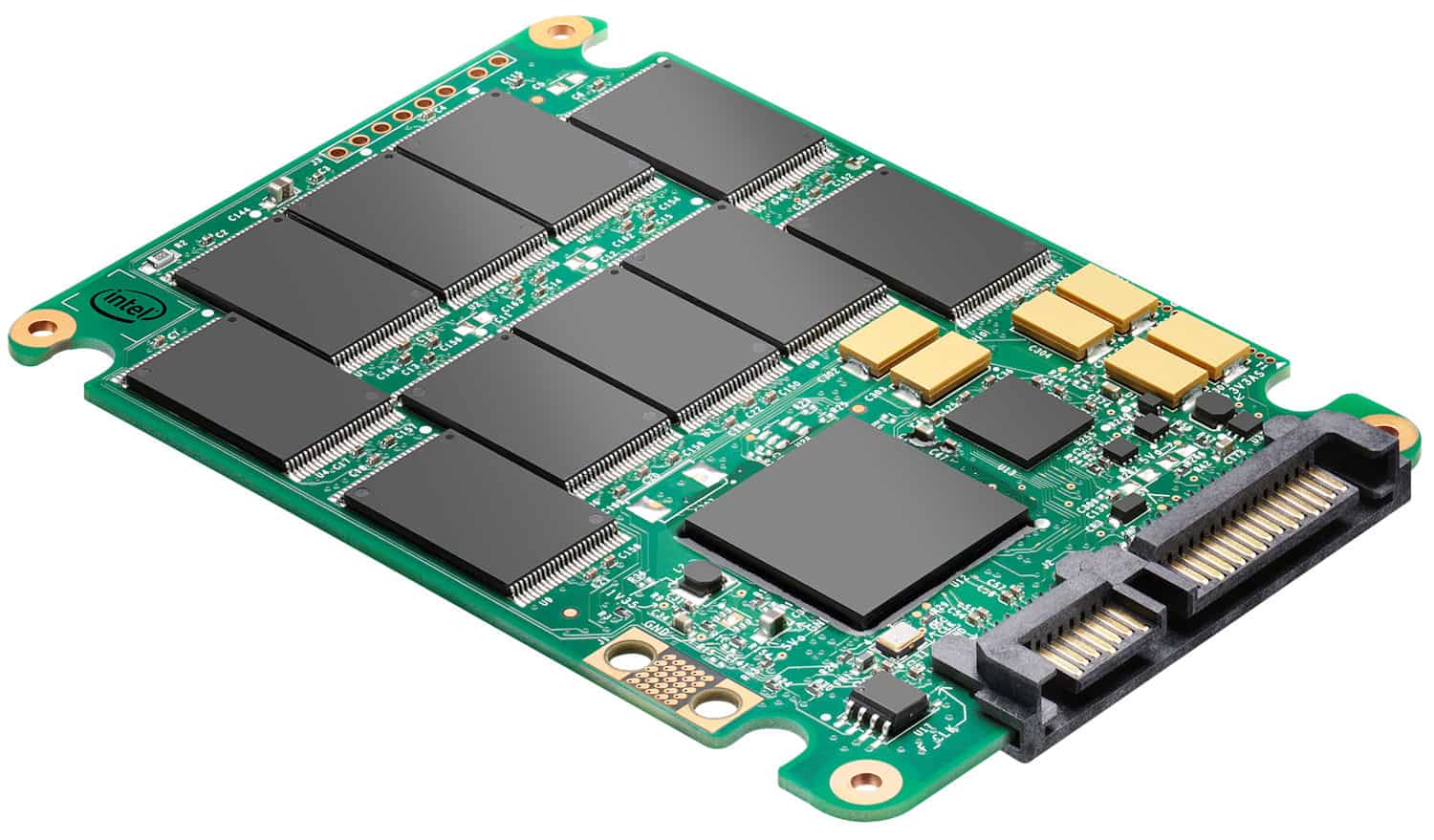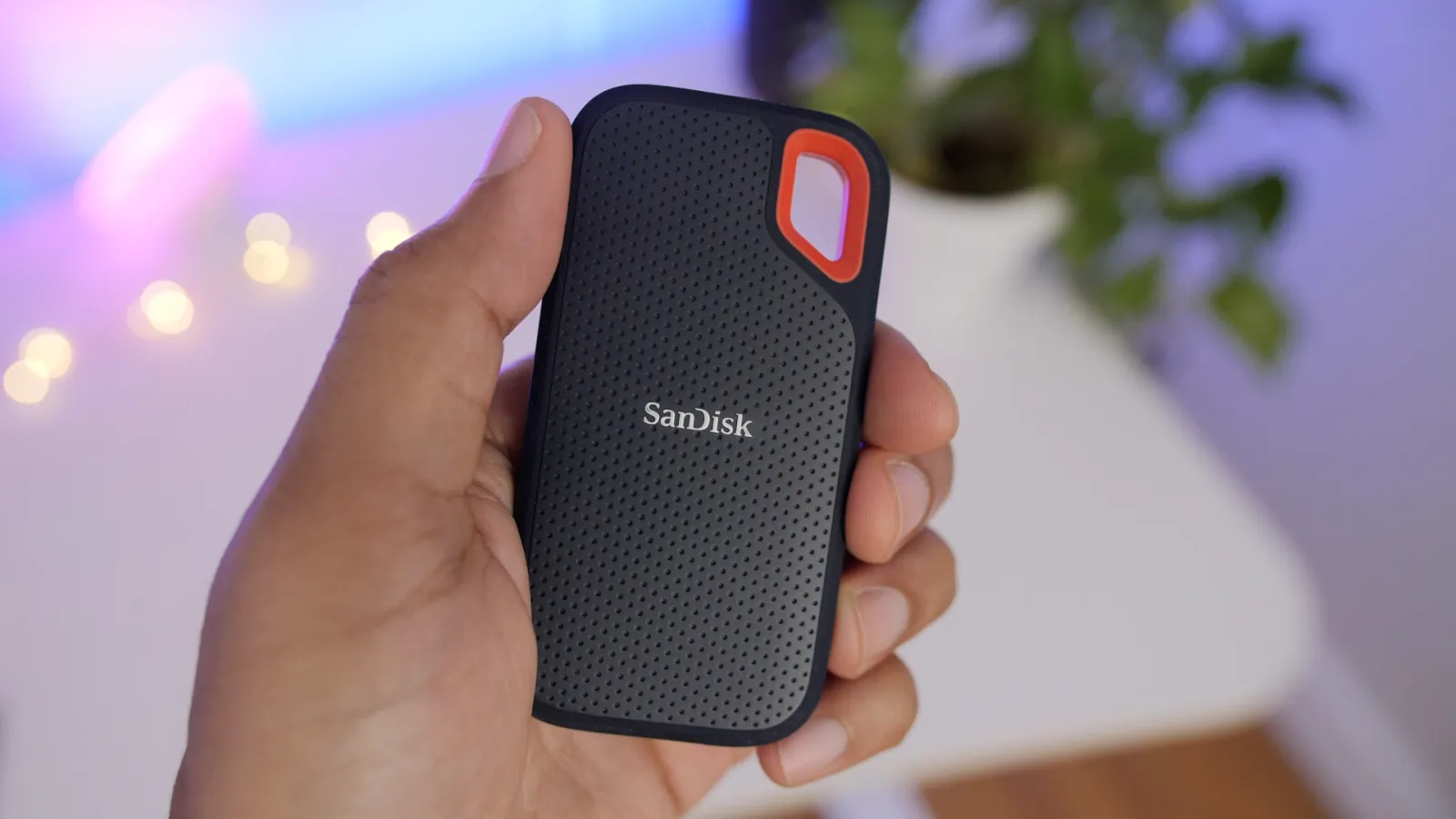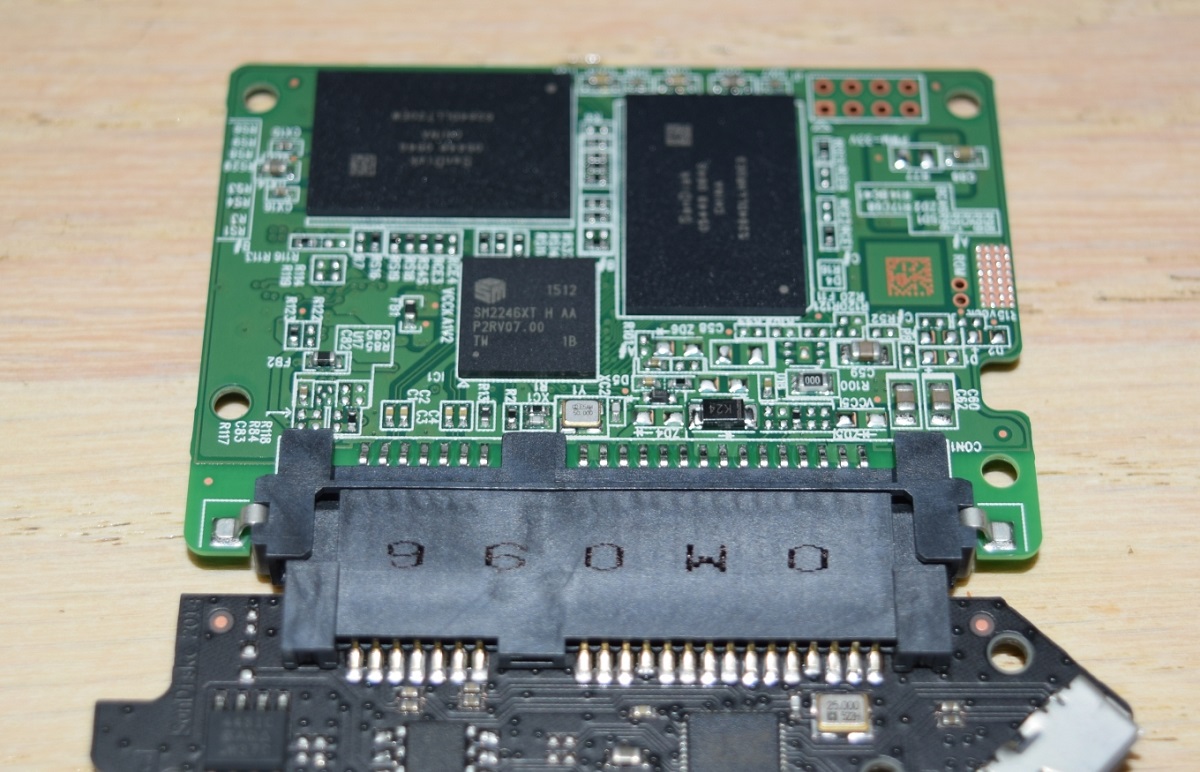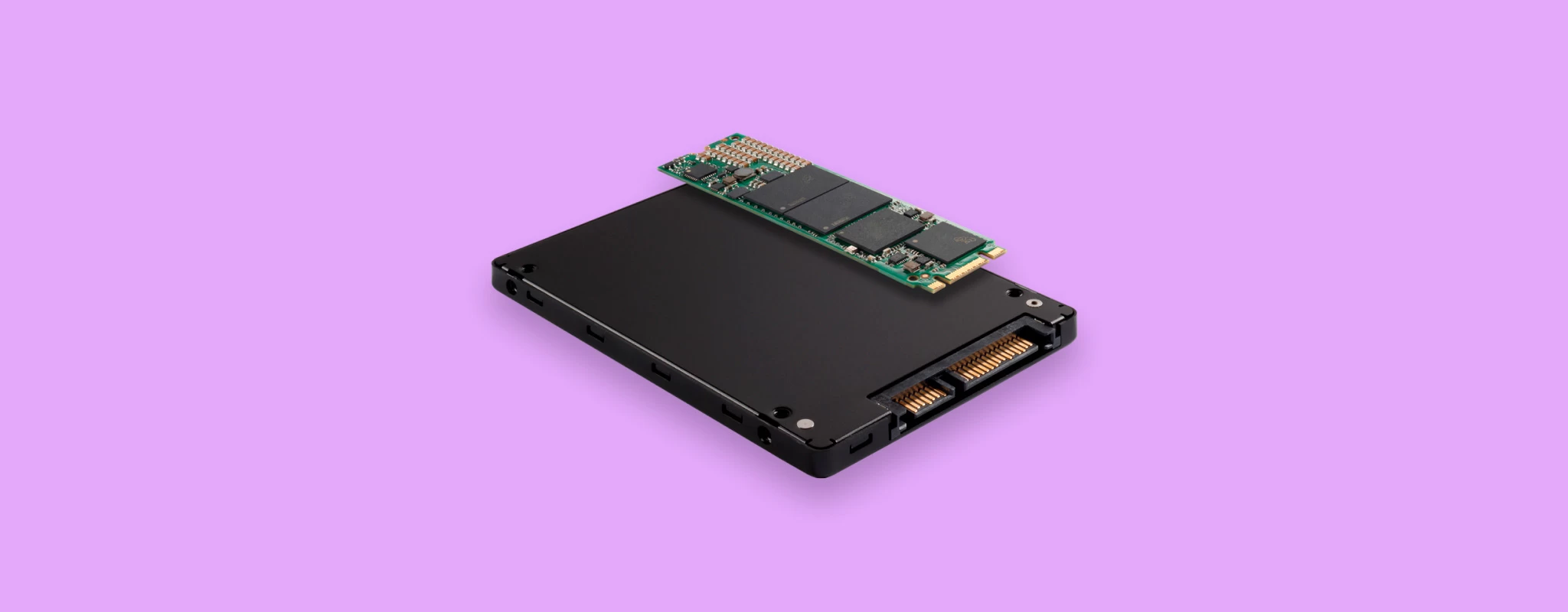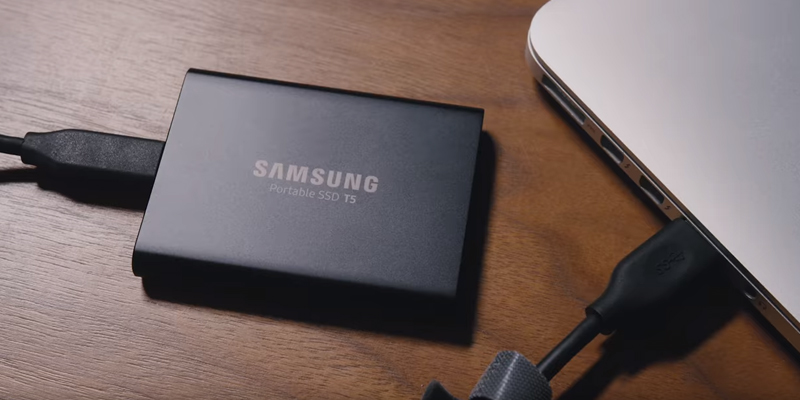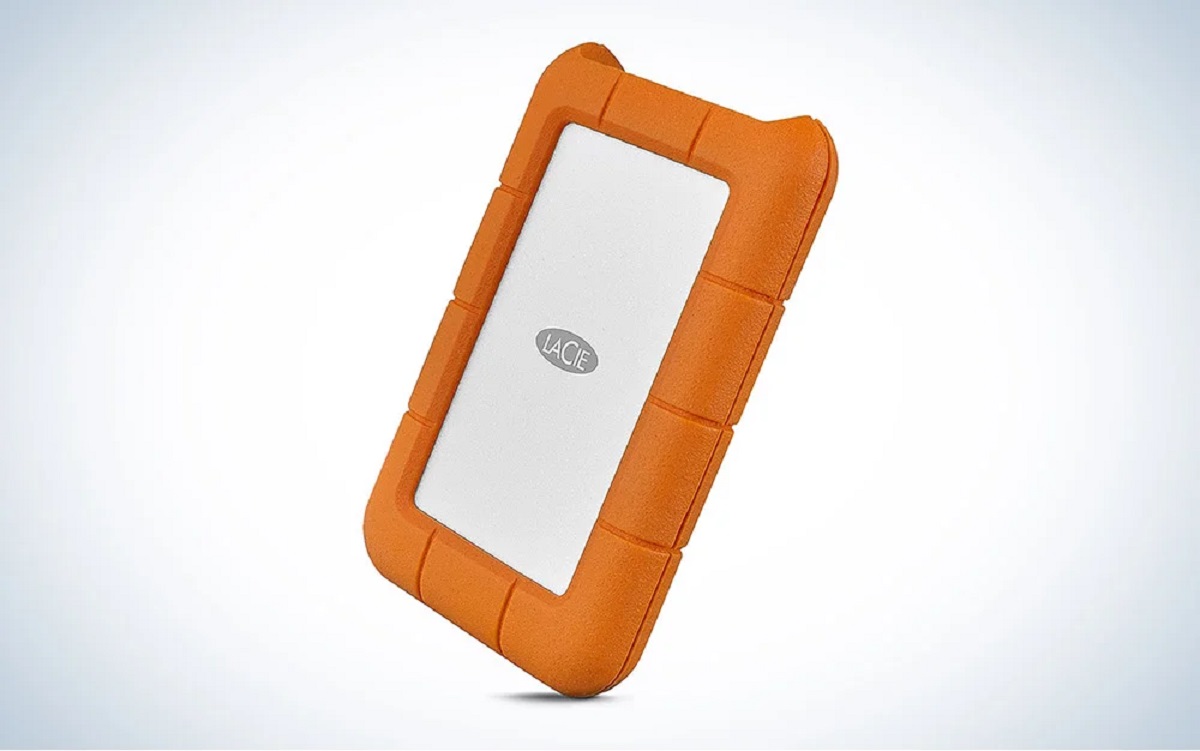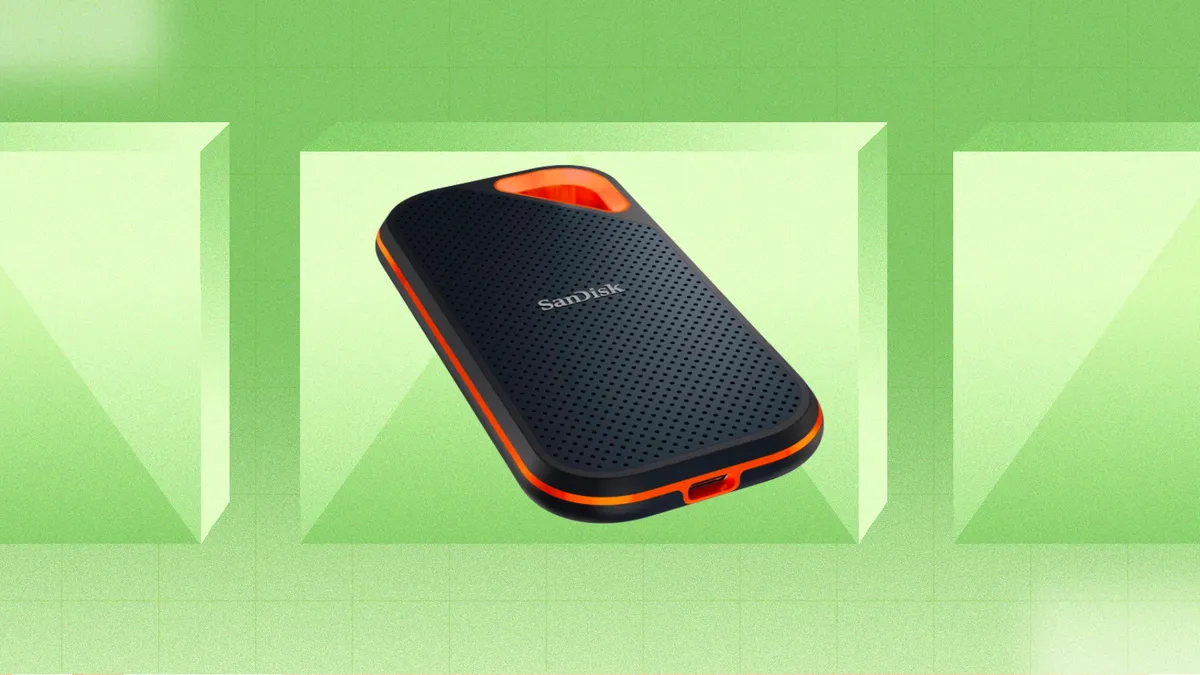Introduction
Welcome to the world of solid-state drives, commonly known as SSD disks. These innovative storage devices have revolutionized the way we store and access data, providing faster and more reliable performance compared to traditional hard disk drives (HDD). In this article, we will explore the ins and outs of SSD disks, examining how they work, their advantages and disadvantages, different types available, and how they compare to HDD disks.
With the rapid advancement of technology and the growing need for faster and more efficient data storage, SSD disks have become increasingly popular in recent years. They have become the go-to choice for many individuals and businesses seeking high-speed and reliable data storage solutions.
But what exactly is an SSD disk, and how does it differ from a traditional HDD? In simple terms, an SSD disk is a storage device that uses flash memory to store and retrieve data. Unlike HDDs, which rely on spinning magnetic disks and mechanical parts, SSDs have no moving parts, making them more durable and less prone to data loss caused by physical damage.
One of the key advantages of SSD disks is their speed. Because there are no moving parts, data can be accessed and transferred much faster than with traditional HDDs. This results in significantly improved boot times, faster application loading, and quicker file transfers.
Another notable advantage of SSD disks is their reliability. Since there are no moving parts, the risk of mechanical failure is greatly reduced. This makes SSDs more resistant to shock and vibration, making them an ideal choice for portable devices such as laptops and tablets.
Despite their numerous advantages, SSD disks do have some drawbacks. One of the main concerns is the cost. SSD disks tend to be more expensive compared to HDDs, especially when it comes to high-capacity storage. However, prices have been steadily declining, making SSDs more accessible to consumers.
In this article, we will delve deeper into the world of SSD disks, exploring their functionality, advantages, disadvantages, and different types available on the market. We will also compare SSD disks with traditional HDDs, highlighting the key differences between the two. Furthermore, we will look at the common uses of SSD disks and discuss the factors to consider when choosing the right SSD disk for your needs.
So, fasten your seatbelts as we embark on a journey to discover the fascinating world of SSD disks and unlock the potential of high-speed, reliable, and efficient data storage.
Definition of SSD Disk
A solid-state drive (SSD) is a storage device that uses flash memory to store and retrieve data. Unlike traditional hard disk drives (HDD), which use spinning magnetic disks and mechanical parts to read and write data, SSD disks have no moving parts. Instead, they rely on integrated circuits to store data electronically.
SSD disks are composed of NAND flash memory chips. These memory cells are organized into a grid, with each cell capable of holding multiple bits of data. When data is written to an SSD disk, it is stored in these memory cells by trapping electrical charges within them. To read the data, the SSD applies an electrical charge to the appropriate memory cells and measures the resulting voltage.
One of the key benefits of SSD disks is their speed. Because they have no moving parts, SSD disks can retrieve and transfer data much faster than traditional HDDs. With faster data access times, SSD disks significantly improve overall system performance, leading to faster boot times, quicker application launches, and reduced file transfer times.
Another defining characteristic of SSD disks is their durability. Without any spinning disks or mechanical components, SSDs are less vulnerable to physical damage caused by drops or vibrations. This durability makes SSD disks an ideal choice for portable devices such as laptops and tablets.
Furthermore, SSD disks have a lower power consumption compared to HDDs. By eliminating the need for mechanical movements, SSD disks require less energy to operate. This results in longer battery life for devices using SSD storage, making them more energy-efficient.
It’s important to note that SSD disks come in various form factors, including traditional 2.5-inch drives, M.2 drives, and PCIe cards. These different form factors allow SSD disks to be compatible with a wide range of devices, from desktop computers to ultrabooks and even servers.
In summary, an SSD disk is a storage device that utilizes flash memory and integrated circuits to store and retrieve data. With their speed, durability, and lower power consumption, SSD disks have become an increasingly popular choice for individuals and businesses looking for high-performance and reliable data storage solutions.
How Does an SSD Disk Work?
The operation of an SSD disk revolves around the use of solid-state memory chips, specifically NAND flash memory. Unlike traditional hard disk drives (HDDs) that rely on spinning disks and mechanical components, SSD disks have no moving parts.
When data is written to an SSD disk, it is stored by trapping electrical charges in the memory cells of the NAND flash memory chips. These memory cells are organized into pages and blocks. A page typically consists of several kilobytes of data, while a block contains several pages.
When data needs to be written, the SSD controller determines which pages are available for writing. It then erases the content of the selected block, so it can be programmed with new data. The data is then written to the empty pages within that block.
One of the unique characteristics of SSD disks is that they have a limited number of times that data can be written to a single memory cell. This is known as the “write endurance” or “program/erase cycle.” To overcome this limitation, SSD disks use a technique called wear leveling. Wear leveling evenly distributes the write operations across all the memory cells, reducing the wear on individual cells and extending the overall lifespan of the SSD disk.
When data needs to be read, the SSD controller is responsible for retrieving it from the memory cells. It applies an electrical charge to the appropriate cells and measures the resulting voltage. The voltage levels indicate the presence or absence of electrical charges, representing the data stored in those cells.
To ensure data integrity and improve performance, SSD disks employ various algorithms and mechanisms. One such mechanism is error correction codes (ECC), which help detect and correct errors that may occur during data storage and retrieval.
Furthermore, SSD disks utilize a feature called wear-leveling algorithms to evenly distribute the write operations across the memory cells. This ensures that certain cells are not excessively used, preventing premature wear and extending the longevity of the SSD disk.
Overall, the lack of moving parts in an SSD disk allows for faster data access, reduced power consumption, and increased durability compared to traditional HDDs. These advantages make SSD disks an excellent choice for those seeking high-performance and reliable storage solutions.
Advantages of SSD Disk
SSD disks offer a plethora of advantages over traditional hard disk drives (HDDs). These advantages make SSDs an attractive choice for individuals and businesses looking for high-performance and reliable storage solutions. Let’s explore some of the key advantages of SSD disks:
- Speed: One of the most significant advantages of SSD disks is their speed. With no moving parts, data access and transfer speeds are significantly faster compared to HDDs. This results in quicker boot times, faster application launches, and reduced file transfer times. Overall, SSD disks provide a noticeable improvement in the performance and responsiveness of any system.
- Reliability: SSD disks have a higher level of reliability compared to HDDs. Since SSDs have no moving parts, they are less susceptible to physical damage from drops or vibrations. This increased durability makes SSD disks an ideal choice for portable devices such as laptops and tablets, providing peace of mind knowing that your data is safer.
- Durability: Traditional HDDs are prone to failure due to mechanical parts wearing out over time. However, SSD disks do not have any mechanical components, making them more durable and resistant to wear and tear. This enhances the lifespan of an SSD disk, resulting in longer-lasting and more reliable storage for your data.
- Energy Efficiency: SSD disks consume less power compared to HDDs, thanks to their lack of spinning disks and mechanical parts. This makes SSDs more energy-efficient, leading to longer battery life in laptops and lower electricity costs for desktops. Additionally, the reduced power consumption contributes to a greener and more environmentally friendly computing experience.
- No Noise: Unlike HDDs, which produce noise from the spinning disks and moving parts, SSD disks operate silently. This noiseless operation creates a more peaceful and distraction-free environment, particularly for those who require a quiet workspace or enjoy using their computers in noise-sensitive settings.
- Compact and Lightweight: SSD disks are generally smaller and lighter compared to HDDs. This makes them a preferred choice for portable devices and slim form factor systems, where space is often limited. The small and lightweight nature of SSD disks allows for greater flexibility in design and makes it easier to carry devices equipped with SSD storage.
In summary, the advantages of SSD disks include their impressive speed, enhanced reliability and durability, energy efficiency, noiseless operation, and compact size. These advantages make SSD disks a popular and sought-after storage solution for a wide range of applications, from personal computers to enterprise-level data centers.
Disadvantages of SSD Disk
While solid-state drives (SSDs) offer numerous advantages over traditional hard disk drives (HDDs), there are also some disadvantages to consider. Understanding these drawbacks will help you make an informed decision when choosing the right storage solution for your needs. Let’s explore some of the key disadvantages of SSD disks:
- Higher Cost: SSD disks are generally more expensive compared to HDDs, especially when it comes to higher-capacity storage. The cost per gigabyte of SSD storage is still higher than that of HDDs, although prices have been gradually decreasing over the years. This higher cost may be a deterrent for budget-conscious users who require large amounts of storage space.
- Limited Lifespan: Unlike HDDs that can last for several years, SSD disks have a limited number of program/erase cycles or write endurance. This means that each memory cell can only be written to a certain number of times before it becomes unreliable. While modern SSDs have improved significantly in terms of lifespan, it is still a consideration for users who perform a large number of write operations regularly.
- Capacity Constraints: Although the capacity of SSD disks continues to increase, HDDs still offer higher storage capacities at a more affordable price point. If you require terabytes of storage space, HDDs may be a more practical choice due to their cost-effectiveness and larger available capacities.
- Performance Impact with Full Capacity: SSD disks can experience a performance degradation when they are nearly or completely full. As the drive approaches its maximum capacity, the available free space for the SSD controller to perform wear-leveling and other optimization tasks diminishes. This can result in slower performance and reduced responsiveness compared to when the drive is not nearing capacity.
- Data Recovery Challenges: In the event of data loss, it can be more challenging to recover data from an SSD disk compared to an HDD. The way data is stored and accessed in SSDs differs from HDDs, making it more complex for data recovery professionals. It is crucial to have proper backup strategies in place to minimize the risk of data loss.
It is important to consider these disadvantages in the context of your specific needs and use cases. While SSD disks may have certain drawbacks, their impressive speed, reliability, and other advantages often outweigh these limitations for many users.
Types of SSD Disks
There are several types of solid-state drives (SSDs) available on the market, each designed to meet different requirements and compatibility needs. Understanding the different types of SSD disks will help you choose the right one for your specific use case. Let’s explore the most common types of SSD disks:
- 2.5-Inch SATA SSD: This type of SSD disk is designed to fit into the standard 2.5-inch drive bays found in most laptops and desktop computers. It uses the Serial ATA (SATA) interface for data transfer, making it compatible with a wide range of systems. 2.5-inch SATA SSDs are available in various capacities and offer a good balance of performance and affordability.
- M.2 SSD: M.2 SSDs are smaller and more compact compared to 2.5-inch SATA SSDs. They use the M.2 form factor, which allows for direct attachment to the motherboard, eliminating the need for cables. M.2 SSD disks come in different sizes, with varying lengths and widths, denoted by a numeric naming convention like 2242, 2280, etc. These SSDs support various interfaces, including SATA and faster NVMe (Non-Volatile Memory Express) protocol, providing faster speeds for compatible systems.
- PCIe SSD: PCIe (Peripheral Component Interconnect Express) SSDs connect directly to the PCIe slots on the motherboard, providing faster data transfer rates compared to SATA and M.2 SSDs. These SSD disks utilize the NVMe protocol, designed specifically for faster flash memory storage. PCIe SSDs offer high performance and are commonly used in gaming PCs, workstations, and data center servers where speed is crucial.
- External SSD: External SSDs are portable storage devices that connect to computers and other devices through interfaces like USB or Thunderbolt. These SSD disks offer the advantage of being easily transportable and compatible with various devices, making them ideal for on-the-go storage and data transfer. They provide the convenience of high-speed storage without requiring internal hardware installation.
- Enterprise SSD: Enterprise SSDs are designed for heavy workloads and are commonly used in enterprise-level data centers and server environments. These SSD disks offer higher capacities and enhanced reliability features, such as power loss protection and advanced error correction mechanisms. Enterprise SSDs are optimized for consistent, high-performance data storage and are built to withstand demanding usage scenarios.
It’s important to note that the compatibility of SSD disks depends on the system requirements and available interfaces. Before purchasing an SSD, make sure to check the specifications of your device or consult the manufacturer’s guidelines to ensure compatibility.
Knowing the different types of SSD disks available allows you to choose the right one that best suits your needs, whether it’s for upgrading your laptop, building a high-performance desktop, or enhancing the storage capabilities of your server.
SSD Disk vs. HDD Disk: The Comparison
When considering storage options for your computer or other devices, it’s essential to understand the differences between solid-state drives (SSDs) and traditional hard disk drives (HDDs). Let’s compare SSD disks and HDD disks in terms of several key factors:
- Speed: SSD disks are significantly faster than HDDs. Due to the lack of moving parts, SSDs can access and transfer data at a much higher speed, resulting in faster boot times, quicker application launches, and improved overall system performance. HDDs, on the other hand, have mechanical components that limit their speed and make them comparatively slower.
- Durability: SSD disks have the advantage of being more durable than HDDs. Since SSDs have no spinning disks or moving parts, they are less susceptible to physical damage caused by drops or vibrations. This makes SSDs a more reliable choice, especially for portable devices that are subject to frequent movement or impact.
- Noise Level: HDD disks can generate noise due to the spinning disks and moving parts inside. In contrast, SSD disks operate silently because they do not have any mechanical components. This makes SSDs the preferred option for those seeking a quiet and noise-free computing experience.
- Power Consumption: SSD disks require less power compared to HDDs. Without any moving parts, SSDs consume less energy during operation, leading to lower power consumption and increased battery life in laptops and portable devices. In contrast, HDDs require more power for their mechanical components to operate, resulting in higher power consumption.
- Capacity: HDD disks generally offer larger storage capacities at a more affordable price per gigabyte compared to SSD disks. If you need a large amount of storage space without breaking the bank, HDDs still provide a cost-effective option. However, the capacity of SSDs continues to increase, and high-capacity SSDs are becoming more accessible.
- Cost: One of the main drawbacks of SSD disks is their higher cost compared to HDDs, especially when it comes to higher-capacity drives. SSDs are more expensive to produce due to the advanced technology and flash memory used in their construction. However, the prices of SSDs have been gradually decreasing over time, making them more affordable for many users.
Overall, SSD disks provide significant advantages in terms of speed, durability, noise level, power consumption, and overall performance. They are particularly beneficial for those who require fast and reliable storage. However, HDD disks still have their place, especially for users needing large storage capacities at an affordable price.
When deciding between SSD and HDD, it’s important to consider your specific needs, budget, and storage requirements. SSD disks are an excellent choice for those who prioritize speed, reliability, and performance, while HDD disks offer higher capacities at a lower cost. Ultimately, the choice depends on your specific use case and priorities.
Common Uses of SSD Disks
SSD disks have gained widespread popularity and are used in a variety of applications where high-performance, reliability, and fast data access are crucial. Let’s explore some of the common uses of SSD disks:
- Personal Computers and Laptops: SSD disks have become a popular choice for personal computers and laptops, providing faster boot times and improved overall system responsiveness. They offer a significant performance boost, allowing users to launch applications quickly and handle resource-intensive tasks more efficiently.
- Gaming: Gamers benefit greatly from the use of SSD disks. The fast data access and quick load times provided by SSDs enhance gaming experiences by reducing waiting times for game launches, level loading, and software installations. SSDs also help minimize in-game lag and improve overall gaming performance.
- Media Production: The demands of media production, such as video editing and rendering, require fast and reliable storage solutions. SSD disks provide the necessary speed to handle large media files efficiently. They allow for smooth playback, fast importing, and exporting of media content, helping media professionals work more efficiently and meet critical deadlines.
- Data Centers and Servers: In data centers and server environments, where high-performance and rapid data access are essential, SSD disks are commonly used. They enable faster data processing, reduced data transfer times, and improved overall server performance. SSDs are especially useful for applications that require quick database access or handle intense read and write workloads.
- Portable Devices: Due to their durability and resistance to shock and vibration, SSD disks are ideal for portable devices such as laptops, tablets, and ultrabooks. Besides providing speedy data access, SSDs also contribute to increased battery life in these devices, allowing for longer usage before needing a recharge.
- Consumer Electronics: SSD disks are utilized in various consumer electronics, including cameras, camcorders, and gaming consoles. The high-speed data transfer capabilities of SSDs ensure smooth recording and playback of high-resolution videos, faster processing of images, and quick system updates for gaming consoles.
- Embedded Systems and IoT Devices: SSD disks find applications in embedded systems and Internet of Things (IoT) devices, where space is often limited. The compact size of SSDs allows for seamless integration into small form factor devices without compromising on performance and reliability. They enable faster boot times, efficient data storage, and quick retrieval of information in these embedded systems and IoT devices.
These are just a few examples of the many uses of SSD disks. As the technology continues to improve and prices become more affordable, SSDs are being adopted in a growing number of industries and applications to enhance performance, efficiency, and user experience.
Factors to Consider When Choosing an SSD Disk
When selecting an SSD disk, several key factors need to be taken into consideration to ensure you choose the right one for your specific needs. Here are some factors to consider when purchasing an SSD disk:
- Capacity: Determine the amount of storage capacity you require for your data. SSD disks are available in a range of capacities, from smaller sizes suitable for basic storage needs to larger capacities that can accommodate extensive multimedia files, games, and applications. Consider your current storage requirements and potential future needs to ensure you choose an SSD with sufficient capacity.
- Form Factor: Consider the form factor compatibility with your device and its available slots. SSD disks come in various form factors, such as 2.5-inch SATA drives, M.2 drives, and PCIe cards. Ensure that the SSD form factor you choose is compatible with your computer or device to ensure proper installation.
- Interface: Pay attention to the SSD disk’s interface. SATA III is the most common interface, suitable for most consumer uses. However, if your system supports faster interfaces like NVMe (Non-Volatile Memory Express), opting for an NVMe SSD can provide even higher performance. Check your device’s specifications to determine the interface compatibility.
- Performance: Evaluate the performance specifications of the SSD disk. Look for factors such as read and write speeds, random read and write IOPS (input/output operations per second), and latency. Higher speeds and IOPS indicate faster data access and transfer rates, leading to improved overall system performance.
- Endurance: Consider the endurance or lifespan of the SSD disk. The endurance is typically measured in terms of the total bytes written (TBW) or the drive’s warranty period, whichever comes first. Higher endurance suggests the drive can handle more write operations over its lifespan. Consider your usage patterns and estimate the drive’s durability based on the manufacturer’s specifications.
- Price: Compare prices and consider your budget when choosing an SSD disk. SSDs generally have a higher cost per gigabyte compared to traditional hard disk drives (HDDs). However, prices of SSDs have been decreasing over time, and the cost difference is becoming less significant. Analyze your storage needs and budget to find the right balance between capacity, performance, and cost.
- Brand and Reputation: Investigate the reputation and reliability of the SSD disk’s brand. Opt for reputable brands with a proven track record for producing high-quality and reliable storage devices. Reading reviews and customer feedback can provide valuable insights into the reliability and performance of the SSD disk.
- Warranty and Customer Support: Check the warranty duration and terms provided by the SSD manufacturer. A longer warranty period indicates the manufacturer’s confidence in the product’s durability. Additionally, consider the availability of customer support and the manufacturer’s reputation for providing timely and helpful assistance in case of any issues or inquiries.
Considering these factors will help you select an SSD disk that meets your storage requirements, performance expectations, and budget constraints. Carefully assess your needs and prioritize the factors that are most important to you in order to make an informed decision.
Conclusion
Choosing the right storage solution is essential to ensure optimal performance, reliability, and efficiency for your computing needs. Solid-state drives (SSDs) have revolutionized the world of data storage, offering significant advantages over traditional hard disk drives (HDDs). With their faster speed, improved durability, lower power consumption, and noiseless operation, SSD disks have become a popular choice for individuals and businesses alike.
In this article, we explored the definition of SSD disks and how they work, delving into their advantages and disadvantages. We also discussed the common types of SSD disks available on the market and compared SSDs with HDDs in terms of various factors. Additionally, we highlighted the common uses of SSD disks and discussed the key factors to consider when selecting an SSD disk.
SSD disks excel in providing faster data access, enhanced system performance, and increased reliability. They have found applications in personal computers, laptops, gaming systems, media production, data centers, portable devices, consumer electronics, and embedded systems. However, it’s important to consider factors such as capacity, form factor, interface, performance, endurance, price, brand reputation, and warranty when choosing an SSD disk.
Whether you’re looking to speed up your personal computer, improve gaming performance, optimize media production, or enhance your server’s capabilities, SSD disks offer a range of benefits that can significantly enhance your computing experience.
By understanding the unique features and considerations of SSD disks, you can make an informed decision and select the right SSD disk that suits your specific requirements. Take into account your storage needs, performance expectations, budget constraints, and overall goals to choose the most suitable SSD disk for your computing environment.
Embrace the power of SSD technology and unlock the potential of high-performance, efficient, and reliable data storage for all your computing needs.







